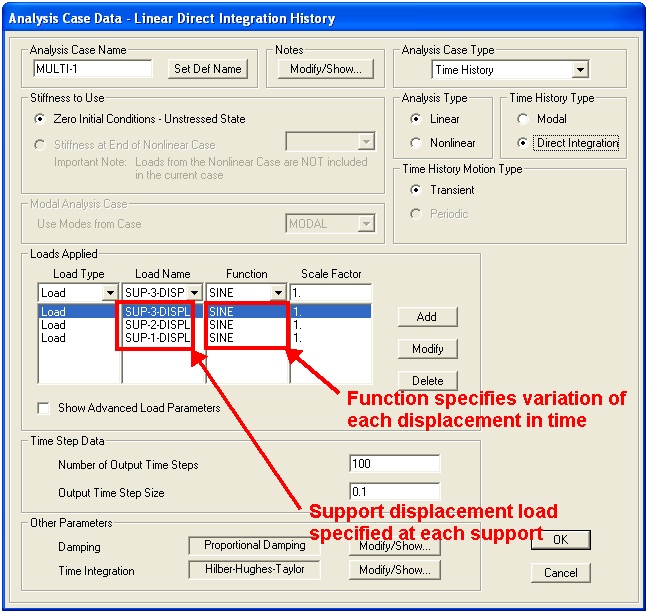Once the displacement time-history record is obtained from an acceleration record, ground motion may be applied to specific support restraints through manual multi-support excitation, described as follows:
- At joints of interest, define a load pattern. This load pattern should apply unit values of joint displacement in the direction of applied acceleration.
- Restrain these joints only in the direction of loading.
- Create a time-history function which will describe variation of the joint displacements in time.
- Define a time-history load case which specifies both the displacement and the time function, as shown in Figure 1:
Figure 1: Definition of load case for multi-support excitation
See Also
- Displacement-record conversion – Displacement time-history record
- Support settlement – Joint displacement and restraint
